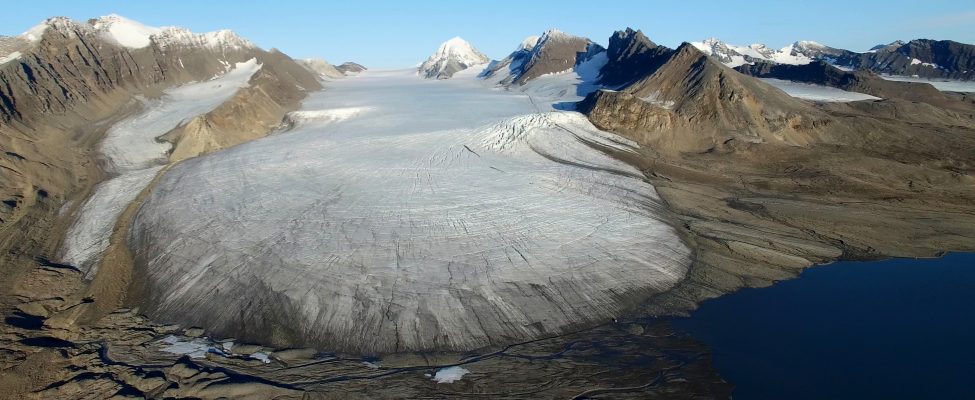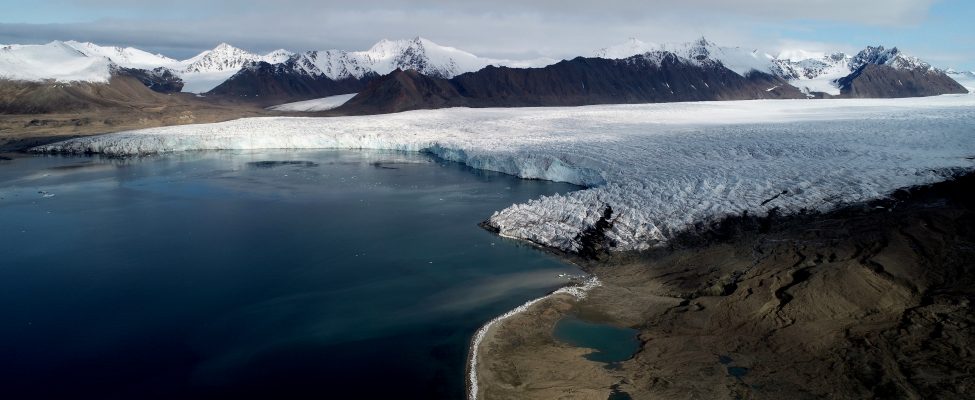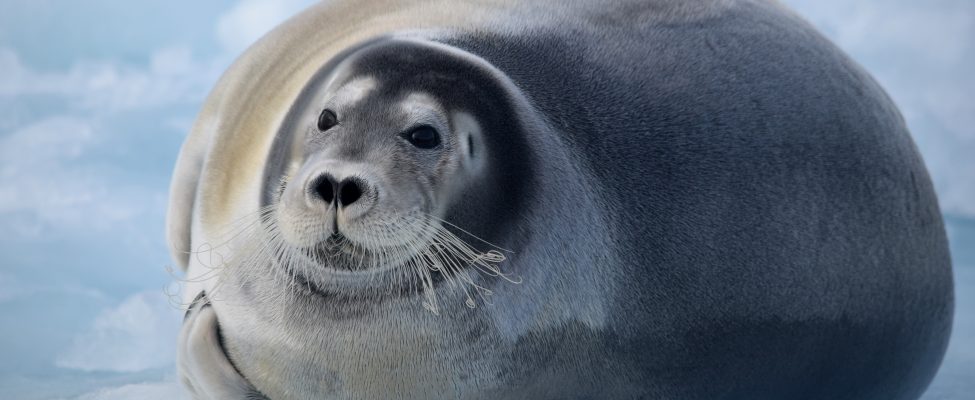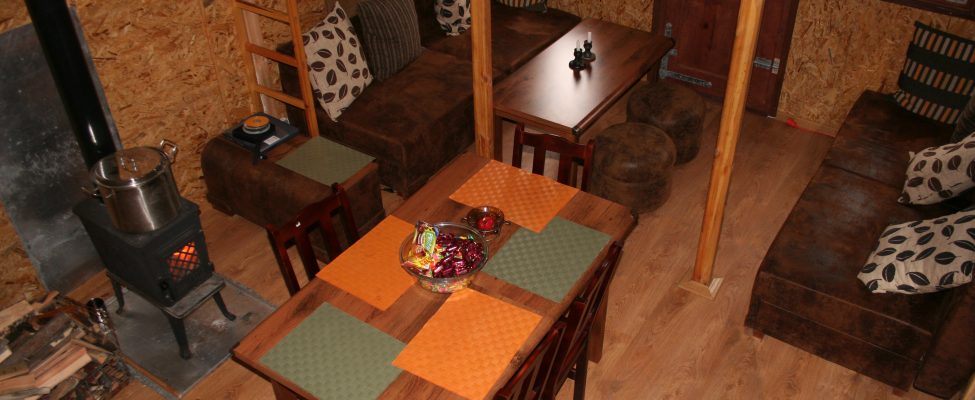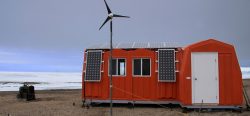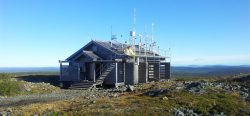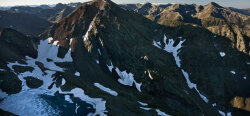STATION NAME AND OWNER
Nicolaus Copernicus University Polar Station “Hahut”, Svalbard (NCUPS) is owned by Nicolaus Copernicus University in Torun, Polar Research Center, Poland.
LOCATION
The station is located in the western part of the Oscar II Land, in the northern part of the coastal Kaffiøyra Lowland, in north-western Spitsbergen. The station was established about 150 m from the shoreline, at the terminal moraines of Aavatsmarkbreen. Svalbard is accessible for scientific research based on the Svalbard Treaty (since 1920). Svalbard Environmental Protection Act determined the erection of national parks. The station is its location outside any nature parks and reserves, and this allows a relatively high degree of freedom to move around and do research in the area, and it is open for visitors without special permits. Research projects need to be registered. The nearest civilian settlement is Longyearbyen, 100 km south of the Kaffiøyra region.
BIODIVERSITY AND NATURAL ENVIRONMENT
The Kaffiøyra is located in north-western Spitsbergen on the eastern side of Forlandsundet. The Kaffiøyra, which is only 14 km long and 4 km wide, and seven land glaciers are located in this region. Kaffiøyra’s natural boundaries are defined by the Aavatsmarkbreen flowing into the Hornbækbukta in the north, and the Dahlbreen terminating in a bay of the same name in the south. The surrounding environment is determined by High ArcticDefinitions of the Arctic vary according to environmental, geographical, political, cultural and scientific perspectives. Some scientists define the Arctic as areas having a high latitude, long winters, short, cool summers,... More conditions (>78°N). The average temperature of air in the Kaffiøyra region in summer is 5.4 °C and the significant air temperature increase is observed, reaching 0.28°C/10 years. The mean annual mass balanceThe difference between the amount of ice a glacier gains in winter and the amount lost in summer. A glacier which is gaining mass has a positive mass balance: more ice is... More of glaciers is about -1.0 m w.e. The permafrostPermafrost is frozen ground that remains at or below zero degrees Celsius (32 degrees Fahrenheit) for two or more years. It forms in regions where the mean annual temperature is... More is thawing to the depth above 2.0 m. High ArcticDefinitions of the Arctic vary according to environmental, geographical, political, cultural and scientific perspectives. Some scientists define the Arctic as areas having a high latitude, long winters, short, cool summers,... More tundraA type of ecosystem in which tree growth is limited by low temperatures. The origin of the word is from from the Kildin Sami word t?ndâr, meaning "uplands" or "treeless mountain tract". In the northern... More characteristic plants are dwarf shrubs and mosses. In the area of the station it is possible to meet various birds, reindeer, arcticDefinitions of the Arctic vary according to environmental, geographical, political, cultural and scientific perspectives. Some scientists define the Arctic as areas having a high latitude, long winters, short, cool summers,... More foxes, seals and polar bears.
HISTORY AND FACILITIES
NCU Polar Station was established in 1975. The station consists of 32 m2 of floor space downstairs and 24 upstairs. There is the main room, a workshop, a bedroom, two mezzanine sleeping areas, and a fully equipped kitchen and lab, and an extra bedroom for 6 persons. There are also additional storage areas, another lab, a bathhouse, a lavatory, and garages for boats and motors. Now, the total useable floor space of all rooms and outbuildings is more than 100 m2. The station is furnished with all the necessary technical equipment, such as generator sets, photovoltaic cells, and motorboats and others. There is enough safety equipment to provide the necessary protection while working on glaciers or on water. This includes radio and satellite communication equipment, and appropriate firearms to be able to respond to potential threats from polar bears.
GENERAL RESEARCH AND DATABASES
Scientific programs emphasize on research in glaciologyThe study of glaciers. More, hydrologyThe study of water in the environment, particularly its amount, movement and quality. It encompasses water in rivers, lakes, glaciers, soil and underground aquifers. The way in which water (liquid and... More, glacial geomorphology, permafrostPermafrost is frozen ground that remains at or below zero degrees Celsius (32 degrees Fahrenheit) for two or more years. It forms in regions where the mean annual temperature is... More and periglacial processes, as well as climatologic and botanical studies. Since 1996 glaciological research and the studies of permafrostPermafrost is frozen ground that remains at or below zero degrees Celsius (32 degrees Fahrenheit) for two or more years. It forms in regions where the mean annual temperature is... More of various ground types and their seasonal thawing, as well as meteorological observations are the major issues on the research agenda. The results of glaciological, meteorological and permafrostPermafrost is frozen ground that remains at or below zero degrees Celsius (32 degrees Fahrenheit) for two or more years. It forms in regions where the mean annual temperature is... More studies to date have made it possible to obtain some of the longest data series available for Svalbard today. Monitoring of contemporary changes in the cryospherePlaces on earth where water is in its solid form, frozen into ice or snow. This includes polar regions but also high altitude areas (high mountains). In a region's winter,... More and standard meteorological observations are being conducted, including using automatic weather stations operating all year round. Investigations conducted at the station are covering the monitoring of the natural environment in its abiotic and biotic parts.
HUMAN DIMENSION
The nearest settlement is Ny-Ålesund, a major international research centre. Forlandsundet is used by small ships travelling between Longyearbyen and Ny-Ålesund. Svalbard capital Longyearbyen is a common place of arrival on the archipelago by regular flights from Norway or by ships. Longyearbyen with its over 2000 inhabitants has all facilities including airport, harbour, hospital, markets, hotels, gas station etc. From Longyearbyen to the station the transportation can be organized by ship companies.
ACCESS
There is an international airport in Longyearbyen with scheduled connections to mainland Norway. From there to the station ship transport is possible during summer (about 4-12 hours). There is also possible to get to Ny-Ålesund, and from this settlement to the station by boat or snowmobiles during spring. From Longyearbyen an air shuttle service normally twice a week connects Longyearbyen with Ny-Ålesund. The flight takes approximately 25 minutes with normally max. 14 persons per flight. The transportation of a larger amount of cargo, shipping from Poland is possible about the end of June.





